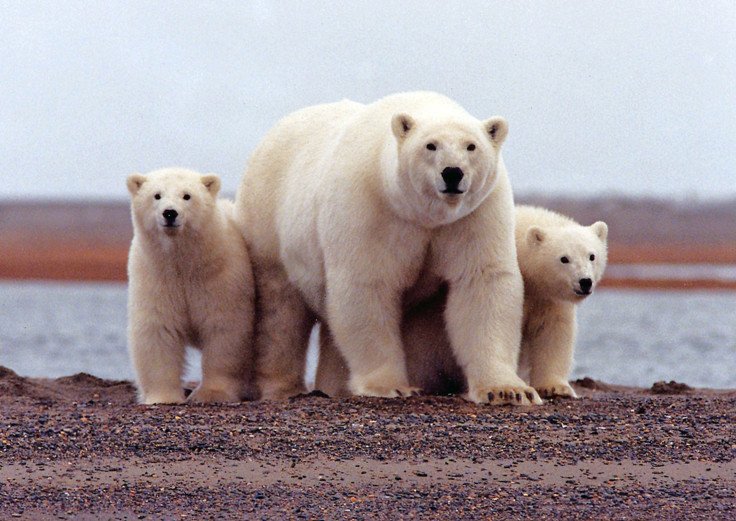Polar Bear Population, Threatened By Shrinking Sea Ice, Could Drop 30% In 40 Years

Emblematic of the effects of climate change, polar bears have once again been shown to be highly vulnerable due to shrinking sea ice levels throughout the range of their habitat. A study published Wednesday by an international team of researchers found a 71 percent chance that over 30 percent of Earth’s polar bear population could be gone in 35-41 years.
The researchers first calculated the generational length of polar bears and found it to be an average of 11.5 years. They also developed a standard measurement for sea ice in the important habitats occupied by polar bear subpopulations, based on the fact that days of sea ice cover had reduced at an average of 1.26 days per year from 1979 to 2014. Then, both of those were combined with statistical models and computer simulations to project changes to the global population of the animals under different scenarios.
They found the high chance of losing about a third of polar bear population over the next 35-40 years (about three generation cycles) based on the projection of their sea ice range reducing to between 20-95 percent of the 2014 level. However, the chance of an upward of 50 percent population decline over the same time was much lower at about 7 percent, and was based on the range reducing to between 0-35 percent. And there was a less than 1 percent chance of the population dropping by 80 percent in the given time frame, which would entail a range loss of over 98 percent.
There are about 26,000 polar bears on Earth, classified into 19 subpopulations. The International Union for Conservation of Nature’s Red List of Threatened Species lists them as vulnerable, and the new study agrees with the IUCN assessment that loss of Arctic sea ice due to climate change is the biggest threat to the animals.
“Polar bears (Ursus maritimus) depend on sea ice for most aspects of their life history. Anthropogenic climate change is the primary threat to the species because, over the long term, global temperatures will increase and Arctic sea ice will decrease as long as atmospheric greenhouse gas concentrations continue to rise,” the study says.
It was published in the journal Biology Letters under the title “Conservation status of polar bears (Ursus maritimus) in relation to projected sea-ice declines.”
© Copyright IBTimes 2024. All rights reserved.





















